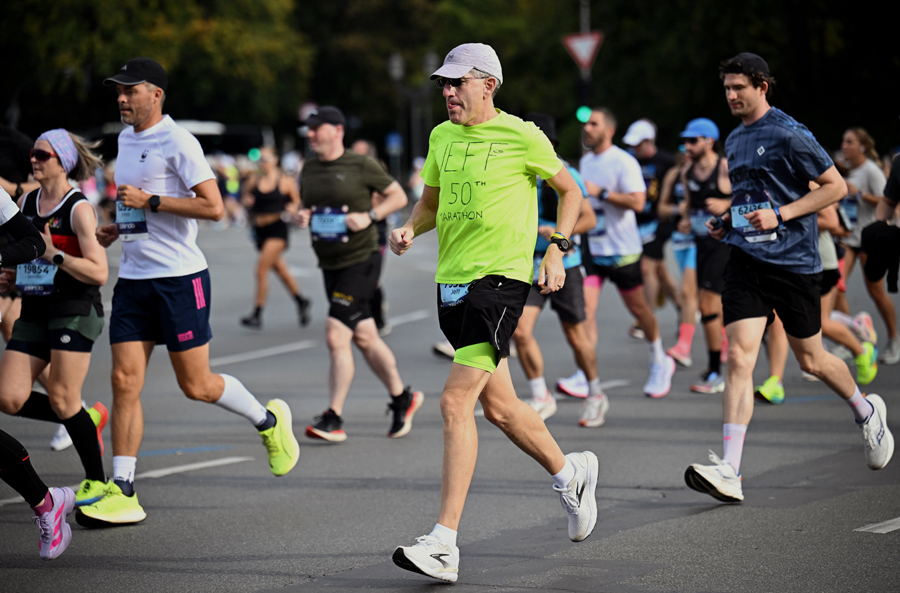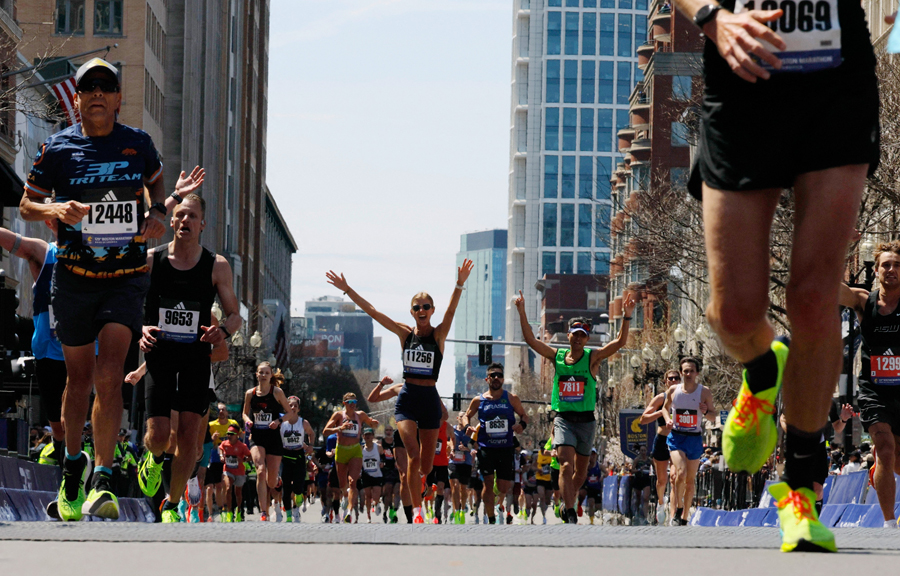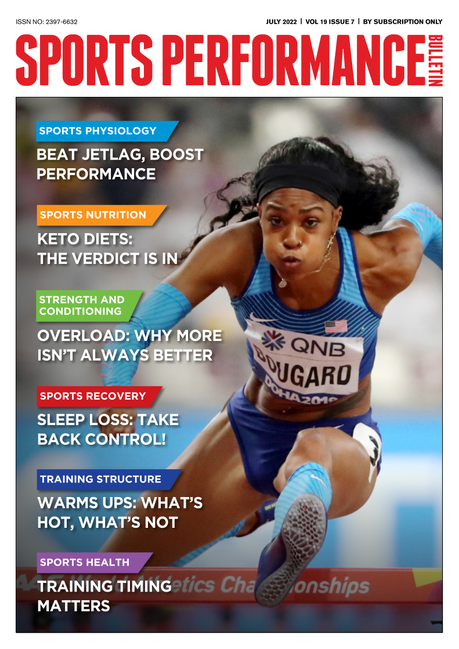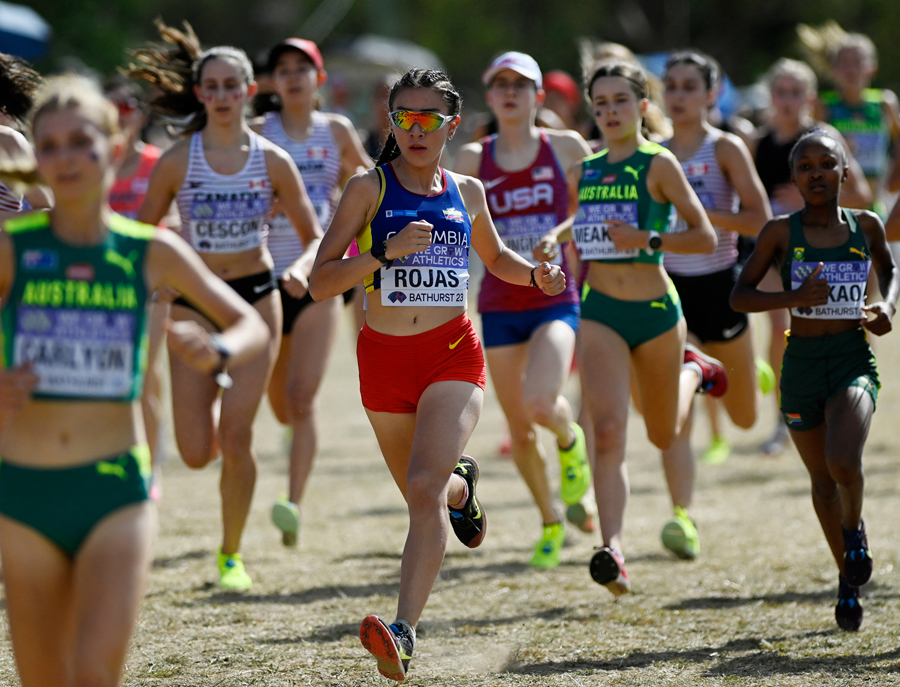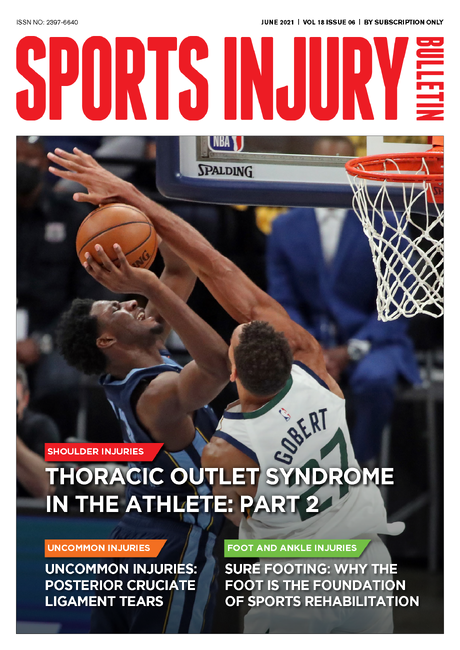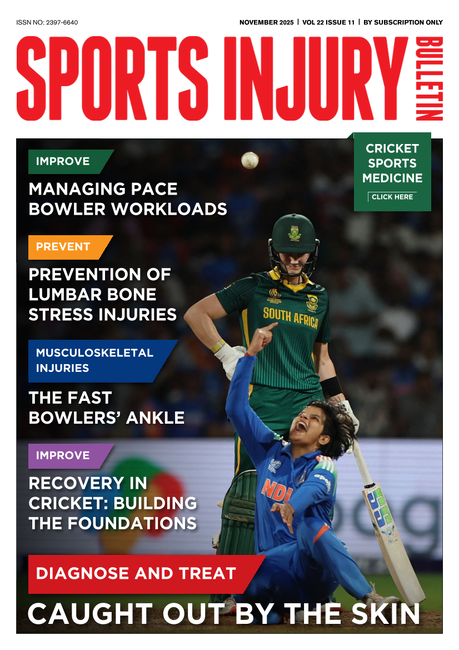You are viewing 1 of your 1 free articles. For unlimited access take a risk-free trial
Marathon preparation: take the long-term approach
How do training volume, duration, frequency and added cross training affect the ability of amateur runners to run a fast marathon time? Andrew Sheaff looks at new research
Marathon running is a very popular athletic event for individuals across a wide range of ages and ability levels. However, while much is known about the training of elite marathoners - thanks to careful documentation of their training and communication with their coaches - scientific investigation of effective training practices for amateur runners has proven to be more challenging. Because of the nature of the event, extremely long training/preparation programs are required. And while it’s possible to conduct these studies, it’s difficult to do so with large numbers of subjects because so many will struggle to complete the program for one reason or another.
Addressing the challenge
In an effort to address this challenge, a group of researchers recently came up with a novel idea. They decided to ask for training history data from runners prior to competing in a major marathon. While it’s much more challenging to collect accurate and controlled training data from large numbers of athletes in this way, this kind of study design has distinct advantages; it’s possible to get a better sense of the importance of training volume, training frequency, and training types (such as run training or cross training) for producing good marathon performance. This kind of pre-race training information can provide novel insights as to how to structure marathon training, providing critical information to coaches and athletes alike.
What they did
The researchers (from the US) put together a unique research project to learn more about training characteristics and marathon running performance by using a unique design(1). The study was a prospective study – where the subjects were identified and surveyed before the race was run. This is in contrast to a large number of studies, which are retrospective in design, meaning that an event occurs and researchers look back in time to identify potential influences on the event’s outcome. In this study, the researchers had the necessary data prior to the race. Prospective studies are more useful than retrospective studies as they tend to have less bias and are more effective at determining cause-and-effect.
The authors recruited 1063 registered participants for the Boson Marathon, with 917 completing all survey and training responses. Approximately 45% of these respondents were males and 55% females. They were defined as ‘developmental-level’ athletes, having trained for an average of nine years and having participated in an average of 16 previous marathons. In other words, while they were amateurs, these were experienced runners.
The subjects filled out survey in the month prior to competing in the race. To get a better understanding of who the subjects were, and to account for potential sources of bias, the researchers collected basic demographic information. They also asked the subjects how many years they had been training for marathons, and how many marathons they had participated in. The most interesting component of the survey was the running training and cross-training questions. For running training, the subjects were asked about their weekly running hours, their weekly mileage or kilometers, their total numbers of runs per week, and the number of hard sessions they performed.
For cross-training, they were asked how many weekly hours of nonspecific general training they performed for their sport. This could include cycling, swimming, rowing, strength and conditioning work, or any other purposeful training. The subjects were asked about the total number of sessions per week they performed with cross-training.
For all the training-related questions, the subjects were asked to provide a response for ‘over the last year’ and ‘over the last four months’. ‘Over the last year’ was considered to represent training habits during the 12-month period prior to the race up, while ‘over the last four months’ represented the last four months before the race. This is a key distinction because the authors were particularly interested to see whether long-term training habits (12-4 months before the race), short-term training habits (4-0 months before the race), or changes in behavior (differences in the runners’ 12-4 months and 4-0 months training habits) influenced performance.
Regarding behavior changes, an important point of comparison was changes in training behavior during the last four months before the race. One of the main metrics was the training frequency change (TFC), which was calculated by taking the training frequency during months 4-0 and subtracting the frequency during month 12-4 before the race. If this number was positive, training frequency increased prior during the last 4 months before the race. If the number was negative, training frequency decreased prior during the last 4 months before the race. The data from the runners was then number crunched and analyzed with their respect to each runner’s own performance in the marathon. The authors calculated whether differences in training frequency, training duration, training distance, or the frequency of hard training sessions influenced performance.
What they found
The key (and perhaps unexpected) finding was that almost 50% of the differences in race times was explained by how often the runners trained in the months 12-4 prior to the race. Running distance, weekly running duration (in hours), and the number of training sessions per week also predicted performance. When the authors dove deeper, they found that those who ran more than 10 hours per week performed faster than those who ran less. Additionally, the runners ran 3.6 minutes faster for every training session that was added per week. More dramatically, one additional quality session per week improved race time by 16.2 minutes!
None of the above is too surprising, as those who more accumulate training mileage and volume tend to perform better overall during marathons. What’s interesting is what the authors found when examining changes in training frequency in the last four months before the race. Changing training frequency accounted for approximately 36% of the variance in official race times, and interestingly, runners who decreased their running frequency in the four months before a marathon compared to months 12-4 performed better than those who maintained or even increased their training frequency over the last four months. Furthermore, runners who increased the frequency of cross-training in the final four months prior to the marathon also improved their performance relative to those who didn’t. In short, runners who decreased their running training and increased their non-running training during the four months before the marathon ran faster!
Understanding the findings
At first glance, the above findings seem to be contradictory. How is it possible that larger training volumes in the last 4-0 months lead to faster running performances, but reduced training frequency also leads to faster performances? There are two explanations. Firstly, the most important preparation work for a marathon is carried out well before the race – ie in the 12-4 months prior the race. If runners achieve and maintain high volumes here, they can reduce their training and still achieve high volumes in months 4-0. This allows them to recover effectively. This contrasts with those who increase training volumes leading into a marathon race - akin to cramming for an exam!
Secondly, it’s possible that well-conditioned runners simply reduced the frequency of training runs but performed longer sessions to better prepare for the demands of the race. This idea is supported by better performances from those who increased their cross-training performance in the last 4 months leading into the race, allowing them to focus on their more important (ie longer) running sessions. Again, in both, cases effective long-term training and planning leads to better performances as opposed to a rushed preparation, with extra runs/volumes crammed in at the end.
Practical advice for runners
To run a fast marathon, high overall training volumes in both the 12-4 month and 4-0 month periods beforehand are key. Running a lot and running well leads to fast marathon racing. However, it’s also critical to ensure the avoidance of overwork in the last 4 months. This can be seen by the benefit of reductions of running frequency and in increase in cross training frequency in this study. his can ensure the maintenance of health and performance leading into the race. By maintaining freshness and health, runners can continue to perform at a high level up to and including the targeted race.
Unfortunately, a common strategy in amateur runners is to take the opposite approach. Many runners will not maintain a relatively high year-round training volume, and will instead consolidate their training volume in the months leading up to the race. As the study demonstrated, it is the work that is performed over an extended time period beforehand that is as much a determinant of performance as anything else. While increasing the training load leading into the race may improve performance as opposed to doing nothing, it’s a much less effective strategy than consistently preparing to run fast!
The key takeaway for runners and coaches is to think long-term with their marathon preparation. The more runners can build and maintain a high training load early on, the faster they will run. Successful runners maintained the volumes and frequencies throughout the year leading up to the race. Put another way, it’s less effective to increase training load leading up to a race than to patiently and gradually building up mileage (to reduce injury risk) over an extended period of time. Having built and maintained relatively high training volumes over a long periods of time, the key is to then fine tune those loads going into your target races, perhaps by dropping some running volume while maintaining high-quality runs and also substituting in some cross training.
References
1. Sports Med. 2025 Sep 6:10.1007/s40279-025-02304-4. doi: 10.1007/s40279-025-02304-4
Newsletter Sign Up
Testimonials
Dr. Alexandra Fandetti-Robin, Back & Body Chiropractic
Elspeth Cowell MSCh DpodM SRCh HCPC reg
William Hunter, Nuffield Health
Newsletter Sign Up
Coaches Testimonials
Dr. Alexandra Fandetti-Robin, Back & Body Chiropractic
Elspeth Cowell MSCh DpodM SRCh HCPC reg
William Hunter, Nuffield Health
Keep up with latest sports science research and apply it to maximize performance
Today you have the chance to join a group of athletes, and sports coaches/trainers who all have something special in common...
They use the latest research to improve performance for themselves and their clients - both athletes and sports teams - with help from global specialists in the fields of sports science, sports medicine and sports psychology.
They do this by reading Sports Performance Bulletin, an easy-to-digest but serious-minded journal dedicated to high performance sports. SPB offers a wealth of information and insight into the latest research, in an easily-accessible and understood format, along with a wealth of practical recommendations.
*includes 3 coaching manuals
Get Inspired
All the latest techniques and approaches
Sports Performance Bulletin helps dedicated endurance athletes improve their performance. Sense-checking the latest sports science research, and sourcing evidence and case studies to support findings, Sports Performance Bulletin turns proven insights into easily digestible practical advice. Supporting athletes, coaches and professionals who wish to ensure their guidance and programmes are kept right up to date and based on credible science.
